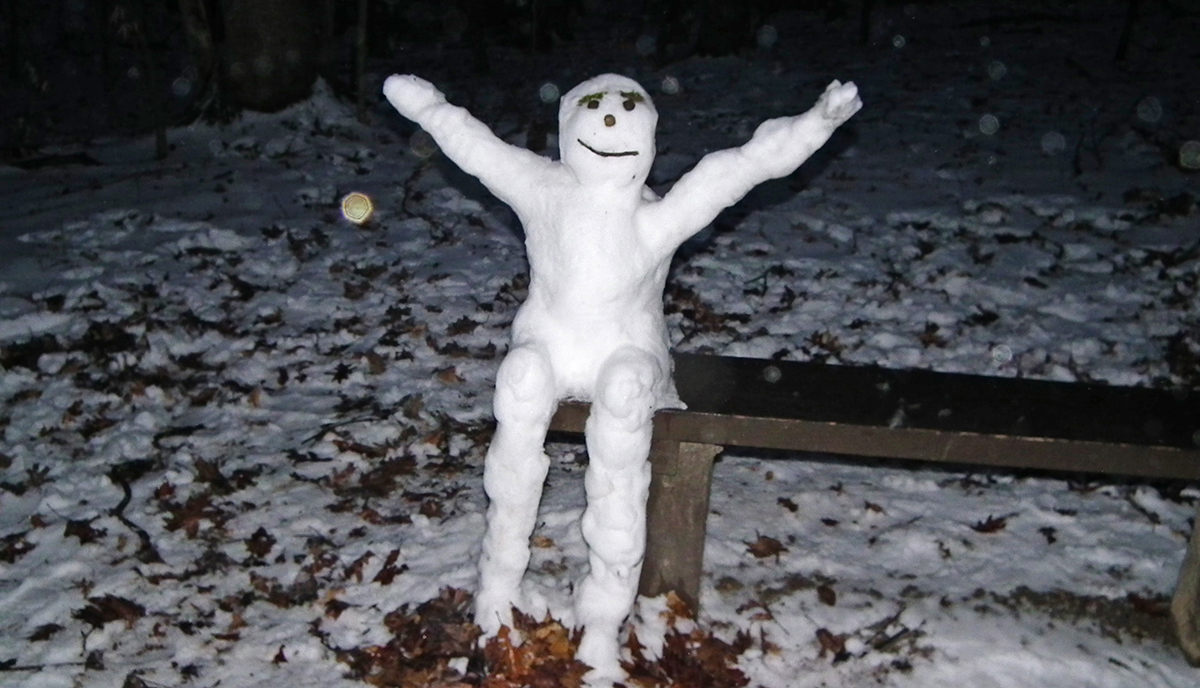DIANA MORSE
Former Naturalist at Blacklick Woods
FROM THE METRO PARKS ARCHIVES – PARKSCOPE WINTER 2011-12

The cold, drier air of winter causes a magical thing to happen. Not just the generating of static electricity when walking on a rug. Winter air creates delicate crystals of water that clump into flakes and fall to the ground. The flakes can become a carpet of white that reflects moonlight and helps sound travel greater distances. It creaks and squeaks underfoot. It lets us follow squirrels from tree to tree hours after they have moved through a yard. The falling crystal clumps, called snowflakes, are a special part of winter.
To make snow you need water vapor and air colder than 32°F, the freezing point of water. Both can be found high in the atmosphere most of the year. The cold air makes the water vapor solidify into ice crystals. Ice crystals are tightly organized water atoms. Atoms arrange in a hexagonal or six-sided shape. As more crystals form they group together into a six-sided snowflake.
Snowflakes can be delicate works of art. If the air in the cloud is close to 32°F, or between 10° to 0°F, the flakes can have six branching arms that look like feathers or ferns. These are “stellar dendrite” flakes. At the same temperatures the flakes can form as a more solid appearing set of concentric hexagons or “plates.” At around 20°F the flakes will be long and narrow “needles” or chunky-looking six-sided columns. Columns will also form below 0°F.
Most snowflakes are irregular or broken when they reach the ground. They may have collided on the fall from the cloud, or not formed symmetrically. Finding the perfect snowflake is a fun activity on a snowy day. Catching the snow before it reaches the ground is one of the tricks to finding an unbroken flake. Use soft fabric, like fleece or velvet, to gently catch the delicate flakes. The darker the fabric the easier it will be to see the snow. The fabric needs to be cold to prevent the flake from melting. Use a magnifying glass to get an up-close look at the flake. Photographing snowflakes can also be a fun challenge. Use the macro setting to catch some of the detail. Whether using a magnifier or camera be sure to hold your breath while looking to prevent melting.
You can grow snowflakes anytime of the year by building a chamber with super-saturated humid air that is very cold. This sounds very high-tech, but actually uses easily found items. The parts needed include a 20-ounce plastic bottle, foam cups big enough to hold the bottle with an inch on the sides, a sponge, light-weight fishing line, a paperclip and dry ice. Ice cream stores often carry dry ice. The bottle is the chamber. The sponge holds the water to form water vapor and the dry ice super cools the air in the chamber. Fragile snowflakes will grow on the fishing line. Complete instructions here

Snow Facts and Fiction
- No two snowflakes are alike? This is a good philosophy question! No one has seen every snowflake, so this could be a false statement, but snowflakes are so complex it is probably true.
- It doesn’t snow in the summer? Snow can fall during warm weather. The air around the clouds can be cold enough to form snow, but it melts before reaching the ground.
- Why is snow white when water is clear? Ice crystals reflect all colors of light, so snow looks white.
